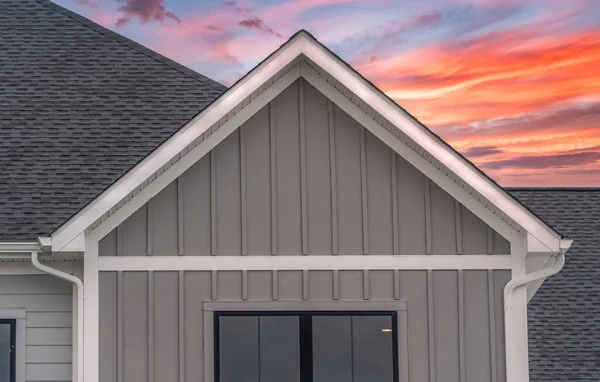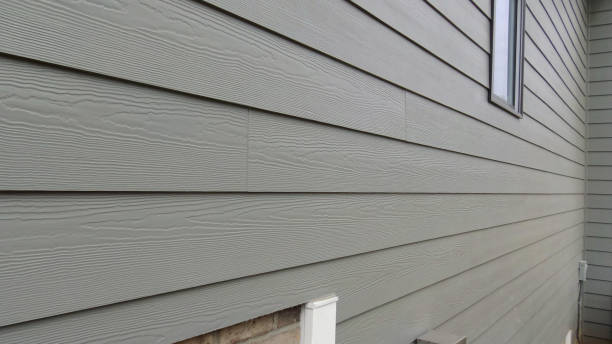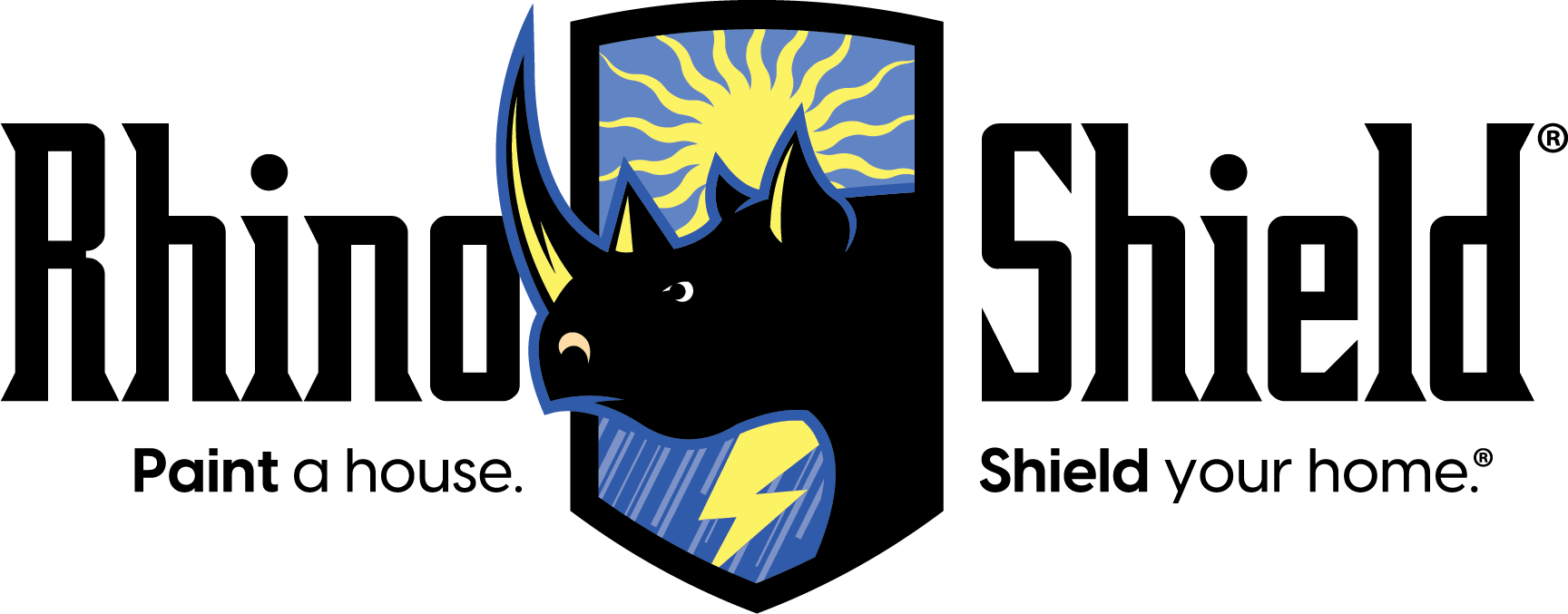
In the world of exterior home improvement, one material has been gaining popularity for its durability, versatility, and aesthetic appeal – fiber cement siding. Over the years, we at Rhino Shield have worked on tens of thousands of homes with cement board siding. Some common questions we get from customers are, “How much does it cost?” and “What all am I paying for?”
To answer these questions, we’ll not only analyze the cost, but give you a general breakdown of the installation process so that you have a better understanding of where your money is going.
In this comprehensive guide, we will delve into the intricacies of fiber cement siding, exploring its:
- Composition
- Cost
- Benefits
- Drawbacks and how to alleviate them
- the step-by-step process of installation
The Composition of Fiber Cement Board
Fiber cement siding is engineered using a combination of Portland cement, sand, and cellulose fibers derived from wood or other plant materials. This composition results in a robust and weather-resistant material that can withstand the harshest elements. The careful balance of these components contributes to the durability and versatility that make fiber cement siding an attractive choice for residential and commercial applications.
Appearance and Texture
One of the remarkable aspects of fiber cement siding is its ability to mimic the appearance of traditional materials such as wood, stucco, or masonry. Advanced manufacturing processes allow for a wide range of textures and finishes, providing homeowners with the flexibility to achieve their desired aesthetic.
Additionally, if the trajectory of growth keeps going at the current rate, fiber cement siding may soon become the most common material to build a house with.
How Much Does It Cost to Install Fiber Cement Siding?
Accounting for material costs and labor, fiber cement siding can run you anywhere between $5 to $15 per square foot. You can exceed this average by:
- Having obstacles unique to your home that a contractor must work around.
- Going with premium cement board siding.
- Owning a big house with a lot of surface area to cover.
- Your location. (Do you live in a more expensive state/area?)
While we recommend going with a certified contractor who specializes in installing siding, below is some cost information if you’re interested in doing the work yourself.
- Labor costs alone are usually between $2 and $8 per square foot.
- Fiber cement planks are about $4 to $6 per square foot.
Material Costs:
- Blades| $50 - $100
- Nail gun| $100 - $250
- Drill| $50 - $300
- Cutting tool| $70 - $300
- Air compressor| $100 - $1,000
While fiber cement siding is durable and relatively low maintenance, you’ll need to get repairs eventually. These repairs have a wide range of $2 to $20 per square foot.
Key Benefits of Fiber Cement Siding

Fiber Cement’s Durability:
Fiber cement siding stands out for its exceptional durability. Resistant to rot, pests, and decay, it offers longevity that surpasses many traditional siding materials. Its ability to withstand harsh weather conditions, including heavy rain, extreme temperatures, and high winds, ensures that your home remains protected for years to come.
Low Maintenance Requirements
Unlike wood siding, which may require frequent painting, sealing, and repairs, fiber cement siding is low maintenance. Its resistance to warping, cracking, and pests reduces the need for regular upkeep. Homeowners can enjoy a beautiful exterior without the constant worry of extensive maintenance tasks.
Versatility in Design:
Fiber cement siding provides an extensive palette for design creativity. Available in a variety of styles, colors, and textures, it can be customized to complement different architectural styles and personal preferences. Whether you aim for a classic, rustic look or a modern, sleek appearance, fiber cement siding adapts to your vision.
Fire Resistance:
Safety is a paramount concern for homeowners. Fiber cement siding, unlike wood, is not combustible. The non-combustible nature of the materials used in its composition contributes to creating a fire-resistant barrier, enhancing the overall safety of your home.
The Downsides of Fiber Cement Siding
While Fiber cement is a great wood alternative, as it’s cheaper, doesn’t rot, and is more durable, it absorbs much more heat than wood or even vinyl siding— another type of siding also made to mimic the appearance of wood.
Prone to Heat:
Cement board’s proclivity to conduct heat means you’ll spend more on energy costs to keep your home cool. This is why you should consider using a paint that not only helps protect your fiber cement but also hinders heat conductivity and helps insulate the inside of your home.
Our Rhino Shield exterior coating is solar reflective, meaning it keeps UV rays from penetrating your home, reducing the surface temperature of your walls exponentially. Additionally, Rhino Shield is comprised of over 60% solids that are thick and tightly packed with ceramic microspheres. This aids the insulation of your home.
Naturally Porous:
By its nature, cement is porous and absorbs water, especially wind-driven rain. This makes it prone to mold and other bio-growths. Rhino Shield is water-repellant on the outside, which keeps water from seeping into your home’s material, and breathable on the inside, meaning it allows moisture in the air coming from inside your home (such as from showers and cooking pots) to pass through the coating and escape.
Prone to Fading:
Some fiber cement brands offer pre-painted boards, but these factory paints deteriorate quickly. This is why it’s always a good idea to paint over your cement siding with a durable coating that is UV-resistant and won’t fade as easily. Rhino Shield is UV-reflective, reducing the damage the sun causes.
Installation Process of Fiber Cement Siding
Preparation:
Before the installation can begin, it's essential to prepare the exterior of your home. Clean the surface thoroughly, removing any dirt, debris, or old siding. Repair any damage to the sheathing, ensuring a smooth and even surface for the fiber cement siding installation.
Flashing Installation:
Begin by installing flashing around windows, doors, and other openings. Flashing is a crucial component that prevents water infiltration and ensures a watertight seal. Properly installed flashing contributes significantly to the overall water resistance of the siding system.
Framing Inspection:
Inspect the framing of your home to identify any structural issues that need addressing. Ensure that the framing is suitable for the installation of fiber cement siding. Correct any problems, reinforcing the structural integrity of your home before proceeding with the siding installation.
Moisture Barrier Installation:
Apply a moisture barrier over the sheathing to protect your home from water damage. This barrier acts as an additional defense against moisture infiltration, safeguarding the structure and preserving the effectiveness of the fiber cement siding.
Siding Panels Installation:
Start installing the fiber cement siding panels from the bottom of the wall, working your way up. Follow the manufacturer's guidelines regarding the appropriate spacing, fastening methods, and overlap requirements. Use corrosion-resistant nails to secure the panels to the sheathing.
Joint Treatment:
Pay close attention to joints and corners, as these areas require special treatment. Apply high-quality caulking or sealant to seal joints and prevent water penetration. Properly treating joints is crucial for maintaining the weather-resistant properties of fiber cement siding.
Trim Installation:
Install trim pieces around windows, doors, and corners to enhance the aesthetic appeal of the siding. Properly installed trim not only adds a finishing touch to the exterior but also serves a functional purpose by protecting vulnerable areas from water and debris.
Painting or Finishing:
Once the siding is installed, you have the option to paint or finish it according to your preferences. Fiber cement siding holds paint well, allowing you to choose from a wide range of colors to enhance your home's curb appeal.
Regular Maintenance:
While fiber cement siding is known for its low maintenance and periodic inspections, we still recommend cleaning it. Remove any debris or dirt that may accumulate on the surface and address any issues promptly to prevent further damage.
Conclusion
Fiber cement siding has rightfully earned its place as a preferred choice for homeowners seeking a durable, versatile, and visually appealing exterior cladding solution. It is the most robust siding option when considering durability for the price.
While Cement board siding does have heat and water absorption pitfalls, these can be alleviated with a protective coating like Rhino Shield. If you’re interested in getting a quote for our product, fill out the form below.

